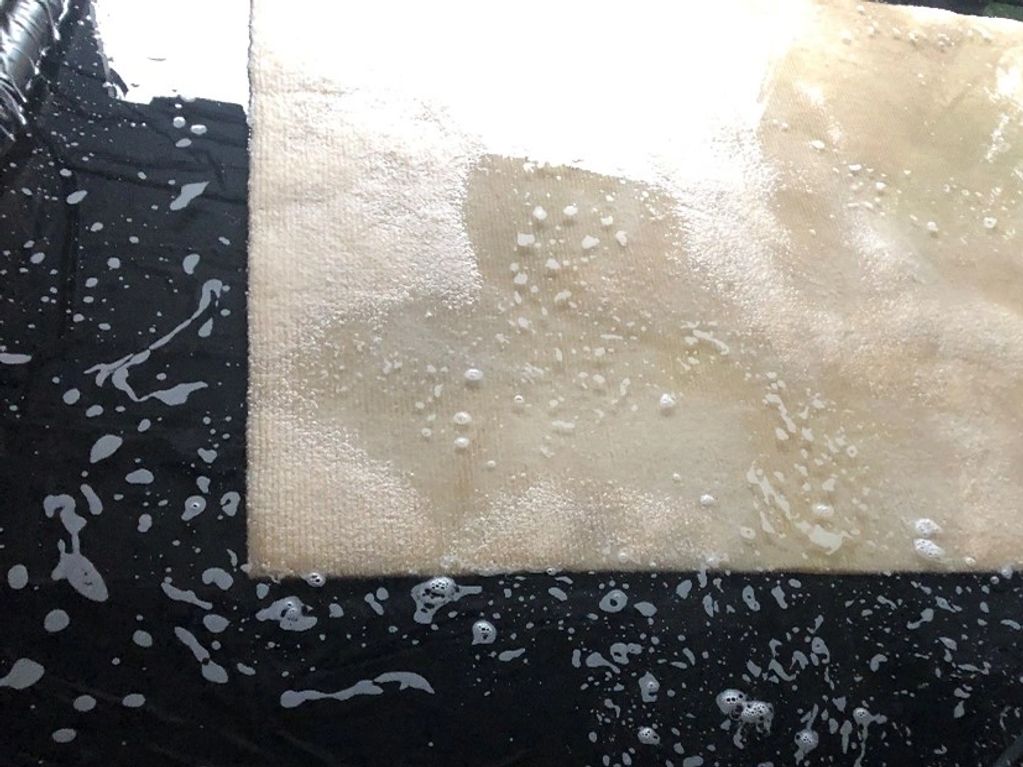genuine cleaning procedure for your Oriental rugs
Multiple Steps of Rug Washing Process
It is recommended to have your area rugs cleaned every year, if not more. Sometimes a rug can go longer without cleaning, depending on the usage and traffic. However, when you might sweep, dust, mop and scrub your hardwood floor or tile floor once a week or more, if you wash your feet and socks several times a week, then why neglect your valuable rugs that are in constant contact with your feet, socks and even shoes? Not to mention, stains, soil, spills and toxic substance that may build up over time that could not only make your rug dirty but could create health risk for your family and your pets in addition to damaging the fiber of your rugs.
The Following steps are the main steps of rug cleaning at Ariana Rug Cleaning, to ensure the best service possible:

1. Inspection of the rug and testing for Dye Bleed
We measure the rug, inspect and test for dye bleeding and then determine the suitable procedure of washing. We also check for damaged and vulnerable areas and discuss any existing and potential problem with you and make sure you are aware of all the steps.

2. Dusting
The first step is to dust the front and back of rug and extract all the dust, dirt, sand and pet hair with our professional duster and commercial grade vacuum cleaner.

3. Soaking (in case of pet urine)
We soak the rug contaminated with pet urine in a rug bath and add special formula to break down the urine from the fiber of the rug. This process can last for up to three hours depending on the type of rug and amount of urine it might have. A thorough rinse is required after soaking before actual washing.

4. Hand-Washing/machine washing
We soak the rug with cold water, and then apply our special non-toxic, wool safe rug shampoo (for wool rugs) and hand wash your rug, gently scrubbing with our soft brush. We do use rotary scrubbing machine with soft bristle brush, depending on the type of the rug, which is determined during the inspection.

5. Fringe work
Although, we use
best carpet cleaner shampoos used in the industry, sometimes, the fringes need extra attention, due to the fact that they are lighter in color and water evaporation from the fiber can cause browning. We pay close attention to the fringes and re-clean them after the initial rug cleaning procedure is completed to ensure you get the best quality of service.

6. Rinse Rinse Rinse
Running water and squeegee will do the job. All rug cleaners will agree that this is the most important step in the area rug washing process. We rinse the front and back of the rug multiple times until the water comes out clear. This ensures no rug shampoo, contaminants and residue is left in the rug.

7. Water Extraction
The water is extracted from the rug with a water extractor machine and then the rug is the transferred to the drying area laid flat to dry in a temperature-controlled area.

8. Final Inspection
One more round of inspection is done to determine the rug is cleaned and no stains are left, and the fringes do not need additional care. If the fringes need additional care, they are washed, rinsed and dried as necessary.

9. Grooming and final touch
The rug is laid flat and groomed with our special grooming tools. The fringes are groomed with our special fringe comb. If any sharing or trimming is needed, it is done as well. We make sure the rug looks as flawless as possible.

10. Wrapping (optional)
We roll the rug tight and wrap it in recyclable paper wrap for protection from dust and dirt.

11. Delivery
We contact you and schedule your delivery. We will move furniture and place your clean rug in your room, if you need assistance.